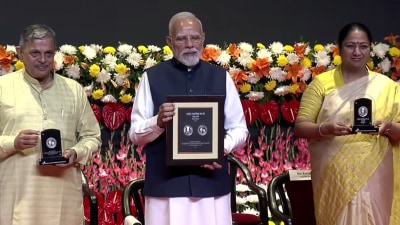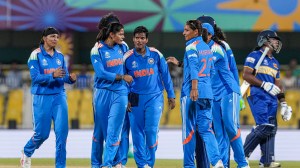Her and Now
A collection of memoirs from the Indian womens movement disappoints by not addressing the contemporary.
Making a Difference: Memoirs from the Womens Movement in India
Edited by Ritu Menon
Women Unlimited
Rs 350
Pages: 400
About 20 stories of women activists associated with the womens movement in India over the past 30 years are drawn together in Making a Difference. Occasionally,they also tell the reader something about those moments of time that proved pivotal for the womens movement in India. Of course,reading the stories makes it clear that there has not been one womens movement but several womens movements,several people coming to it from personal situations or experiences,others from a Leftist idea or when inspired by the environmental movement,and yet others from what one may call a reading of Germaine Greer or Naomi Wolf.
Some of the stories are exceptionally honest,like when Kamla Bhasin discusses the death of her young daughter at the age of 27. Others confront the thorny issues: Nalini Nayak,who has worked with fisherwomen,talks of how women in leadership respond to power,often succumbing to it exactly like men do. However,for those looking for a history of the feminist movement in India through slices of these lives,this book could disappoint.
It deals with the fact of many streams of feminist movements in India by laying them out in a somewhat scattered fashion. Its a great read for converts,no doubt. But for anyone outside hoping for light to be shone on areas not yet teased out,or a larger narrative done in a popular way,the book is not the answer. The people picked to write also examine (perhaps repetitively) mostly aspects of the 70s and 80s feminist movement that fired women to argue against and fight bridal murders,domestic violence and custodial treatment of women by the police.
But important and tricky aspects facing women now,at a time of fragmented politics,unemployment,the large number of women in the unorganised sector,are not looked at,and that perhaps was not the idea at all. Sheba Chachis exceptional contribution comes as a relief. Her photographs focus on,not so much her story,but the story of some women she met and who shaped her ideas of feminism. But the book does not arm you with anything to comprehend an India of contradictions an unprecedented number of women leaders,a whole new womens leadership at the panchayat and state levels,unprecedented laws enacted to protect women in recent times,and the Womens Bill having been passed by the Rajya Sabha last year,all often coexisting with a steep drop in the sex ratio.
Perhaps this was the right time to explore the Indian feminist idea/ideas,to attempt a narrative of how Indian women evolved their own critique,rather than ape feminist ideas that swept the West in the 1960s and 70s. The book offers a peep into lives of women who no doubt made a difference but there is nothing to help readers like me navigate the feminist idea when it is at a crossroads,with rapidly changing family systems and morality,and the problems thrown up by new economic and political conditions.



- 01
- 02
- 03
- 04
- 05




























